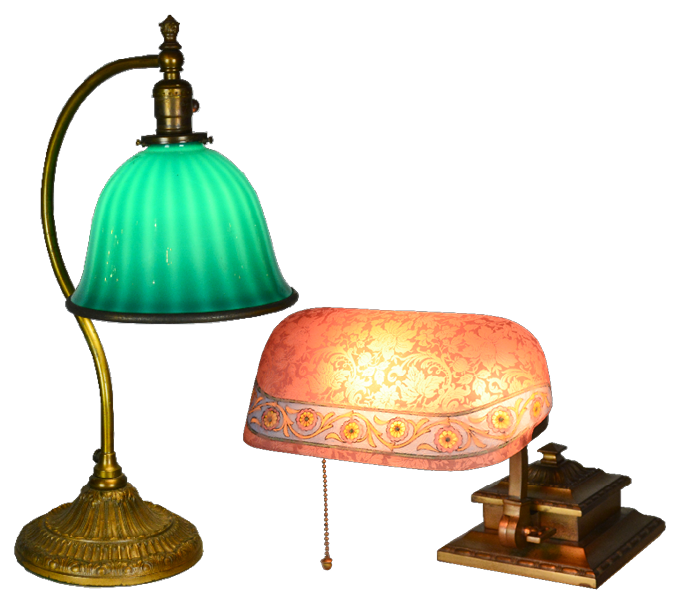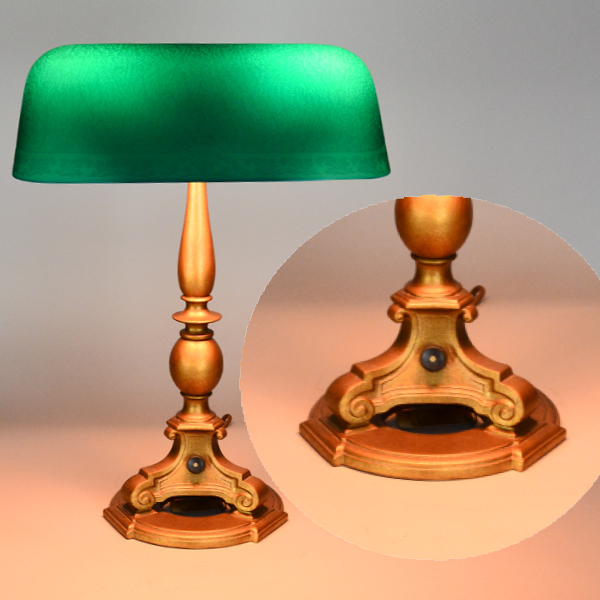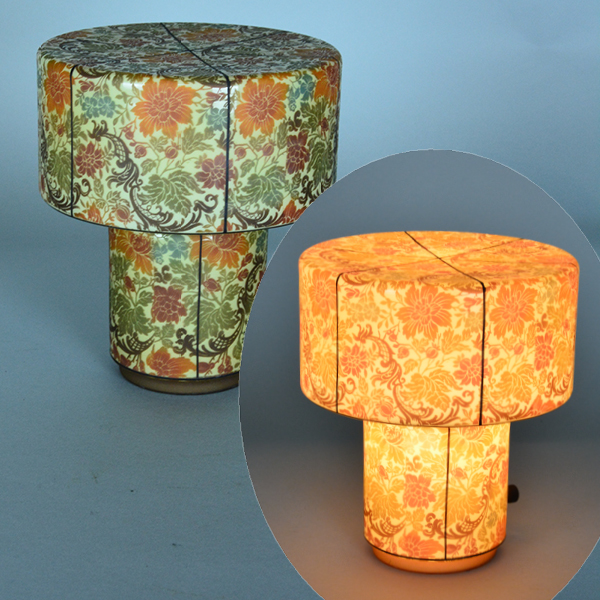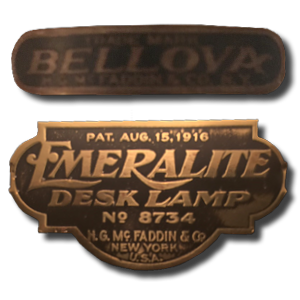
One of the most recognizable lamps in the world, the Emeralite, is named for their bluish-green glass shades and famously referred to as banker’s lamps. Also familiar among collectors are Bellova lamps which were made in various shapes, sizes, colors, and designs. Both Emeralite and Bellova glass hail from Czechoslovakia however, few know that these Czechoslovakian shades were produced for a single American company, H. G. McFaddin & Co, and paired with their metal bases in New York.
Harrison G. McFaddin Co.
On May 11, 1909 the first Emeralite lamp, as we know it today, by Harrison G. McFaddin was approved for patent. Essentially, the Emeralites are brass-based or brass-plated desk lamps with shades made of white opal glass on the inside and a layer of “green” or other colored glass on the outside. These Emeralite shade on the desk lamp model is typically flat on the sides and the back, gently sloping toward the front with no sharp edges. McFaddin described his design as “a new, original and ornamental design for lamp shades”.
All Emeralite shades were produced in the glass factory of J. Schreiber & Neffen, located in the city of Rapotin, Moravia, in what is now the Czech Republic. Due to their contract with H.G. McFaddin & Co., J. Schreiber & Neffen produced the green cased shades strictly for Emeralite lamps. In exchange, McFaddin was required to purchase a minimum number of shades per year.
In 1939, the name of the company was changed to The Emeralite Co. when Charles Innes-Brown, an employee of H. G. McFaddin & Co., purchased the company upon Harrison G. McFaddin’s retirement. Innes-Brown’s takeover changed the company direction from the collectibles users had seen to contemporary models. This change caused the company to be less profitable and, in turn, the company was sold.

Stages of Emeralite Production
There are multiple stages of Emeralite lamp production based on attributes and advancements in the design.
H.G McFaddin & Co. Introduces the Bellova Line

The Bellova line was introduced by H.G. McFaddin & Co. in February 1923. The shades of Bellova lamps are famous for their various intricate designs achieved through acid-etched, painted with air-brush or by hand in the reverse painted technique. Bellova lamps are found in several colors including russet brown, Rhodolite (marbleized and opaque), chamois and rose. The reverse painted technique on the desk lamps typically feature a one-inch boarder along the bottom of the shade in a floral or geometric design.
Another style of Bellova lamps, the Gnome lamps, were made entirely of glass and composed of two parts. Typically, there was a glass-ball or cylindrical shaped bottom and a mushroom type glass on top. The top glass shade style was often referred to as a “coolie-hat.”
H. G. McFaddin offered Gnome lamps in three sizes:
- Gnome Lamps: 15” tall and 14” at the widest point
- Miniature Gnomes: 9” tall
- Petit Gnomes: 4” tall
Authenticity
All Emeralite and Bellova shades by H.G. McFaddin & Co. were signed for authenticity purpose. Emeralite shades were signed with a silver ink stamp, a rectangular decal about two inches wide and one-half inch high or a round decal, while the Bellova signature was typically an ink stamp the size of a dime. Occasionally, a round decal can be found.

